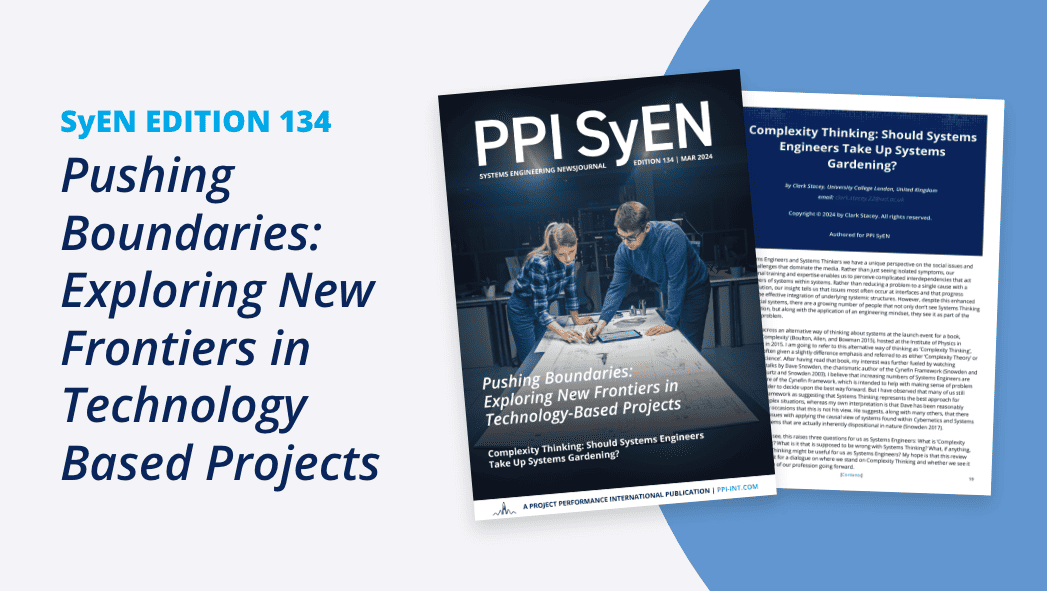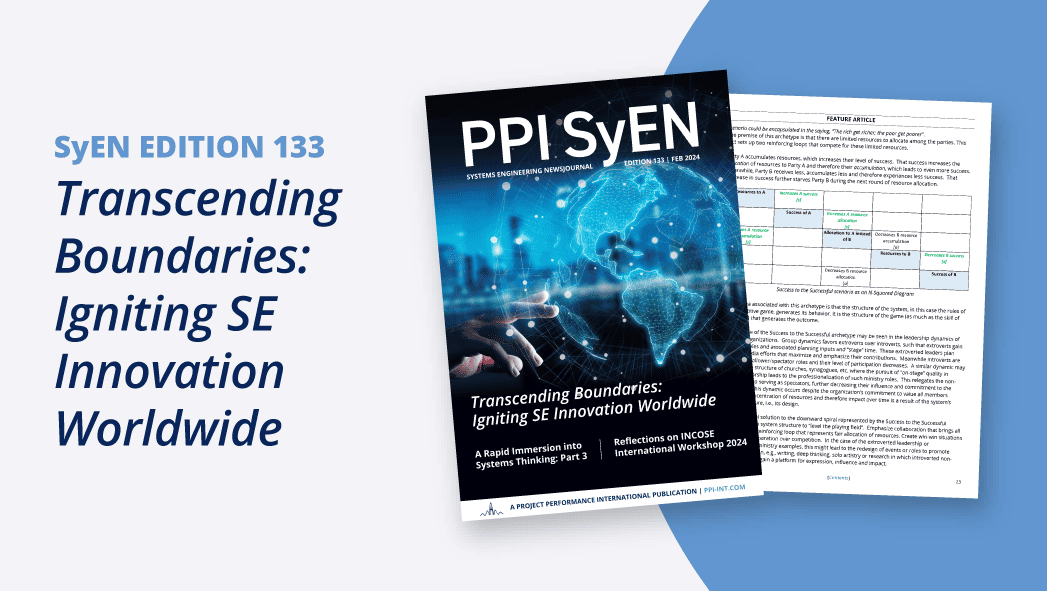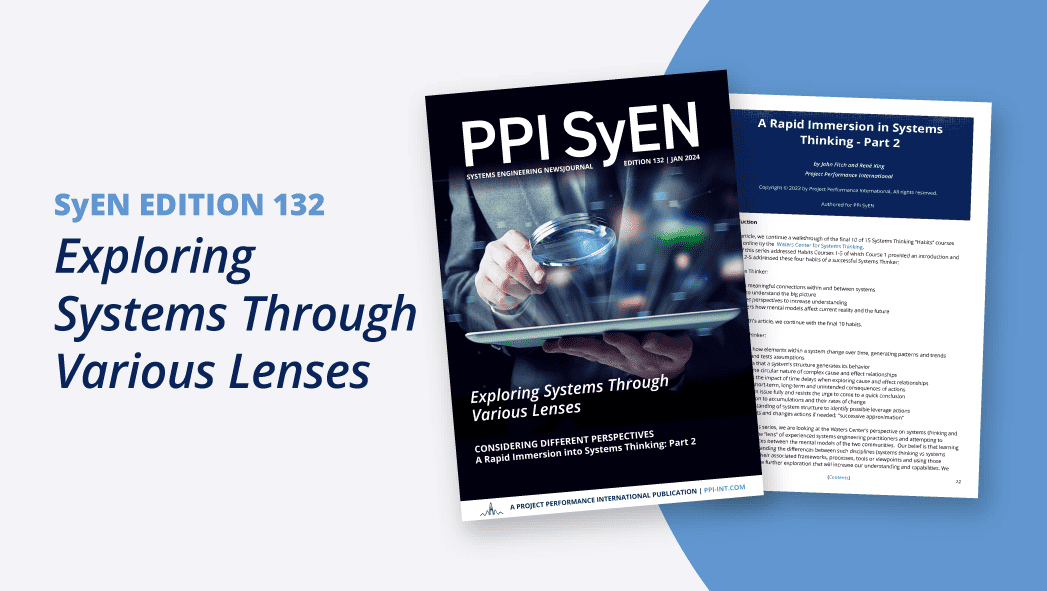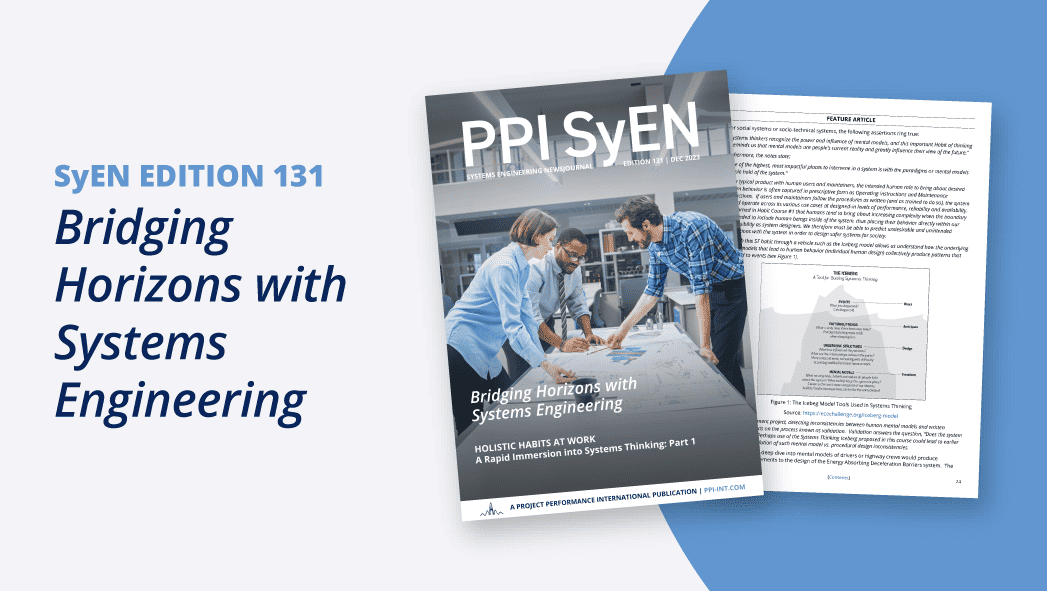IN THIS EDITION
1. Quotations to Open On
2. Feature Article
2.1 Systems Engineering: An Enabler for Artificial Intelligence by Rick Hefner
3. Additional Articles
3.1 Modeling Complex Systems by Taras Alexander Mykytyn
4. Systems Engineering News
4.1 INCOSE Publishes October 2019 Edition of INSIGHT (Feature: Diversity in Systems Engineering)
4.2 Garry Roedler Awarded the IEEE Lifetime Achievement Award
4.3 Contextual Engineering Improves the Success of Projects in Non-Industrial Societies
4.4 SEBoK Version 2.1 Released
4.5 Paperless Presentation Submissions for the INCOSE IS 2020 Due 16 February 2020
4.6 INCOSE Atlanta Chapter to Host Holiday Social
4.7 The Telegraph STEM Awards 2020
5. Featured Organizations
5.1 Institution of Engineering and Technology (IET)
5.2 Research Institutes of Sweden (RISE)
5.3 UK Systems Society
6. News on Software Tools Supporting Systems Engineering
6.1 IDAES Process Systems Engineering Software Now Open Source
6.2 Visure Solutions Releases Web Interface for Requirements Management ALM Solution
6.3 Phoenix Integration Announces the Release of ModelCenter 13.5
7. Systems Engineering Publications
7.1 Systems Engineering: A Complete Guide – 2020 Edition
7.2 Systems Engineering of Software-Enabled Systems
7.3 Practical Creativity and Innovation in Systems Engineering
7.4 Systems Analysis and Design
7.5 Unlearn: Let Go of Past Success to Achieve Extraordinary Results
7.6 Preparing for the Fourth Industrial Revolution: A Guide to Tomorrow’s Technologies and Business Strategies
8. Education and Academia
8.1 The State of Graduate Systems Engineering Education in the U.S.
8.2 Institute for Systems Research: Master of Science in Systems Engineering Degree at the University of Maryland (USA)
9. Some Systems Engineering-Relevant Websites
10. Standards and Guides
10.1 Demystifying DoDAF 2.02 – What Is An Architecture?
10.2 A Systems Engineering Approach to Industrial Cybersecurity
11. Some Definitions to Close On
11.1 Cybernetics
11.2 Artificial Intelligence
11.3 System Architecture
12. Conferences and Meetings
12.1 INCOSE International Workshop – 25- 28 January 2020 (Torrance, CA, USA)
13. PPI and CTI News
14. PPI and CTI Events
15. Upcoming PPI Participation in Professional Conferences
1. Quotations to Open On
“There are two main reasons for iteration from design back to requirements. One is that “the problem” has changed. The other is that the problem was never properly defined in the first place (when it could have been). The latter is much more common.”
Robert John Halligan
“Unlearning is the process of letting go, reframing and moving away from once useful mindsets and acquired behaviors that were effective in the past, but now limit our success. It’s the conscious act of letting go of outdated information and actively engaging in taking new information to inform effective decision making and action.”
Barry O’ Reilly
Editor’s Note: See the description of a book by Barry O’Reilly, Unlearn: Let Go of Past Success to Achieve Extraordinary Results in the SE Publications Section of this issue.
“The illiterate of the 21st century will not be those who cannot read and write, but those who cannot learn, unlearn, and relearn.”
2. Feature Articles
2.1 Systems Engineering: An Enabler for Artificial Intelligence
by
Rick Hefner, PhD
Center for Management and Executive Education, California Institute of Technology
Email: rhefner@caltech.edu
Abstract
Artificial intelligence is being increasingly applied to develop high-performance systems specialized for particular problem domains (e.g., image and speech understanding). These “knowledge-based” systems rely on large amounts of problem-specific knowledge and heuristics. This article reviews current artificial intelligence knowledge-based applications and discusses systems engineering principles required for their design and implementation. The possibilities of using artificial intelligence to support systems engineering are discussed.
Copyright © 2019 by Rick Hefner. All rights reserved.
Introduction
A machine is said to have artificial intelligence (AI) if it can interpret data, potentially learn from the data, and use that knowledge to adapt and achieve specific goals. AI can trace its beginnings to the 1956 Dartmouth Conference where the term “artificial intelligence” was coined by John McCarthy to distinguish the field from cybernetics. Early applications of AI included playing checkers, solving word problems in algebra, and communicating in English.
Although research continued in the 60’s and 70’s, progress was slow. In the early 1980’s AI research was revived by the commercial success of expert systems, a form of AI program that simulated the knowledge and analytical skills of human experts.
Many people first became aware of AI when Deep Blue became the first computer chess-playing system to beat a reigning world chess champion, Garry Kasparov, on 11 May 1997. Similarly, in 2011, a Jeopardy! quiz show exhibition match, IBM’s question answering system, Watson, defeated the two greatest Jeopardy! champions, Brad Rutter and Ken Jennings, by a significant margin. Faster computers, algorithmic improvements, and access to large amounts of data enabled advances in machine learning and perception. Data-hungry deep learning methods started to dominate around 2012.
The field of AI has grown immensely in the last decade, driven by gains in computational power, storage, and infrastructure. Applications abound in engineering, science, medicine, business, finance, education, and law. Sixteen categories of AI application have been identified – reasoning, programming, artificial life, belief revision, data mining, distributed AI, expert systems, genetic algorithms, systems, knowledge representation, machine learning, natural language understanding, neural networks, theorem proving, constraint satisfaction, and theory of computation [Oke, 2008]. A summary of AI applications is shown in Figure 1.
Figure 1: Artificial Intelligence Applications
Systems Engineering Applications
Systems engineering is a transdisciplinary and integrative approach to enable the successful realization, use, and retirement of engineered systems, using systems principles and concepts, and scientific, technological, and management methods [INCOSE, 2019]. Systems engineering is concerned with the design and construction of complex systems which perform useful functions.
The general approach to systems engineering (specify the requirements, design the system, build the system, verify the system against the requirements) is, on its face, in conflict with the exploratory approach generally used to construct AI systems. The AI approach can be summarized as: formulate ideas, build a prototype, assess the prototype, and iterate [Sommerville]. No final system is specified, nor is there formal verification against the requirements; the inherent value is in the system’s usefulness and its ability to get better over time.
This lack of engineering formalism has not stopped the engineering of some very useful intelligent systems. For example, in agricultural applications, John Deere has unveiled its Farm Forward vision [Marr, 2019] – an autonomous farm. Capitalizing on the current generation of self-driving farm vehicles, the farmer monitors machinery from a central control hub, while AI takes care of the moment-to-moment operational decisions.
One of the systems supporting this concept was developed by Wind River Technologies, recently acquired by John Deere. In traditional farming, a field contains healthy plants, weak plants, and weeds. To maximize yields, farmers typically spray the entire field with fertilizers and pesticides, an expensive and environmentally unfriendly approach. The Wind River system uses miniature cameras and a deep-learning image recognition subsystem to isolate individual plants, make a real-time determination as to whether a plant is healthy, weak or a weed and deliver a micro-spray of the proper chemicals, if any are needed.
Similar advances have occurred in medicine and healthcare. AI systems exist to diagnose disease and complex medical conditions, recommend treatments, and assist with delicate surgeries. Robotic assistants are popping up in a wide variety of fields, from elder care to investment decisions.
Using AI to Enable Systems Engineering
Could AI-enabled robots replace engineers? Currently, human engineers excel at many tasks that remain difficult for AI systems, such as visual interpretation, abstract pattern matching, and drawing broad inferences based on experience. However, systems engineering productivity could be enhanced with effective use of well-established AI techniques, such as machine learning, natural language processing, and statistical models.
For instance, machine learning algorithms can process past system designs, learn significant design characteristics, and visually present outcomes and the various tradeoffs. Humans can evaluate the domain space quickly and watch for exceptional cases that might not accurately be handled by the machine. This approach, termed “augmented intelligence”, augments the human skills in pattern matching, unstructured data, and intuition with computational approaches that excel in domain search, systematic trade space exploration, and statistical evaluation [Petrotta and Peterson, 2018].
One can easily imagine an intelligent agent which is fed with domain facts and uses a natural language processing (NLP) algorithm and machine learning to conduct requirements elicitation with a group of stakeholders. Such an approach could be augmented by model-based systems engineering (MBSE), which would help manage the complexity of the resulting requirements set and evaluate potential designs synthesized from previous solutions to related problems.
Although such a concept might eliminate many traditional SE jobs, there are numerous other jobs created by AI, including trainers (stakeholder language, tone, and meaning), explainers (business context, cultural factors), and sustainers (ethics, efficiency, scalability) [Wilson et al, 2017].
Summary
Artificial intelligence will revolutionize the ways systems of the future are engineered. Systems engineering principles, processes, methods, tools, and skills must change. Current and future systems engineers are well advised to learn more about AI principles and to prepare for the promise of an augmented intelligent new world.
List of Acronyms Used in this Paper
Acronym Explanation
AI Artificial Intelligence
MBSE Model-Based Systems Engineering
NLP Natural Language Processing
SE Systems Engineering
References
INCOSE, https://www.incose.org/systems-engineering, last accessed 2019.
Marr, B., The Amazing Ways John Deere Uses AI And Machine Vision To Help Feed 10 Billion People, Forbes, 2019.
Oke, S. A., “A Literature Review on Artificial Intelligence”, International Journal of Information and Management Sciences Volume 19, Number 4, pp. 535-570, 2008.
Petrotta, M., and Peterson, T., “Implementing Augmented Intelligence in Systems Engineering”, NDIA Ground Vehicle Systems Engineering and Technology Symposium, 2018.
Somerville, I., “Artificial Intelligence and Systems Engineering”, Prospects for Artificial Intelligence: Proceedings of AISB, 1993.
Wilson, H., Daughtery, P., Morini-Bianzino, N., The Jobs That Artificial Intelligence Will Create, MIT Sloan Management Review, 2017.
About the Author
 Rick Hefner, PhD, specializes in systems development and maintenance, project management, process improvement, technology transfer, and risk management. His experience spans over 40 years. Dr. Hefner currently serves as Program Director for the Caltech Center for Technology and Management Education, where he is responsible for developing and delivering professional training in systems engineering and project management. Previously, Dr. Hefner served as Director of Process Management at Northrop Grumman Corporation, where he managed corporate process initiatives related to engineering and program management. Dr. Hefner has also worked with companies in the aerospace, defense, communications, electronics, and health sciences industries, including Applied Physics Laboratory, Ares Management, Boeing, DRS Technologies, Halliburton, Herbalife, Honeywell, Jet Propulsion Laboratory, John Deere, L-3, Maytag, Motorola, Pacific Bell, Raytheon, Schlumberger, Southern California Edison, St. Jude Medical, Toshiba, the U.S. Navy, and Xerox.
Rick Hefner, PhD, specializes in systems development and maintenance, project management, process improvement, technology transfer, and risk management. His experience spans over 40 years. Dr. Hefner currently serves as Program Director for the Caltech Center for Technology and Management Education, where he is responsible for developing and delivering professional training in systems engineering and project management. Previously, Dr. Hefner served as Director of Process Management at Northrop Grumman Corporation, where he managed corporate process initiatives related to engineering and program management. Dr. Hefner has also worked with companies in the aerospace, defense, communications, electronics, and health sciences industries, including Applied Physics Laboratory, Ares Management, Boeing, DRS Technologies, Halliburton, Herbalife, Honeywell, Jet Propulsion Laboratory, John Deere, L-3, Maytag, Motorola, Pacific Bell, Raytheon, Schlumberger, Southern California Edison, St. Jude Medical, Toshiba, the U.S. Navy, and Xerox.
3. Additional Article
by
Taras Alexander Mykytyn
President, INCOSE Chesapeake Virginia USA Chapter
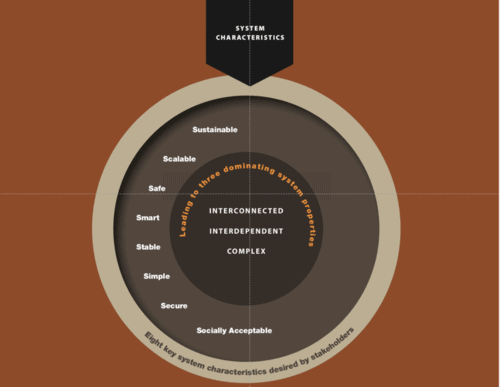
Figure 1: Eight key system characteristics desired by stakeholders
This article focuses on Modeling Complex Systems, and why the Systems Engineering (SE) and Science, Technology, Engineering, and Math (STEM) communities need to further strengthen and improve skills and expertise in understanding the driving requirements for complex systems, system and subsystem inter-dependencies, system-of-systems complexity, and future challenges for all industries. As the expansion of products and services goes beyond local and country boundaries to a more global solution space, SEs and STEM professionals need to think on a broader global scale to address these challenges.
The challenges in society and the world for engineering and STEM disciplines go beyond just having expertise within their specific discipline. These challenges require that teams to coordinate and collaborate across multiple disciplines, to bring together solutions that address diverse technical skills on a more global scale. These systems must not only meet the performance and functionality that are required, they must also address the details of how they are interconnected, interdependencies across a global scale, and the level of complexity in the full life cycle of the system. Noted below are eight system characteristics that must be addressed:
- Sustainability – “acceptable total cost of ownership; full product life cycle management; management of product diversity; pre-planned product evolution; upgrades while operational; and conservation of natural resources”.
- Scalable – “systems are adaptable to a range of performance and system capabilities without breaking their fundamental architecture”, to eliminate recurring investment of the initial high costs of the infrastructure.
- Safe – “system safety is a major concern due the nature of more software-intensive designs”.
- Smart – “systems are able to cope with a changing and unknown environment, assist human operators, or self-organize to provide unanticipated products and services”.
- Stable – “systems of the future must be stable and reliable in order to meet key operational requirements and availability needs; achieve customer acceptance; operate efficiently; avoid liability; and provide expected system value”.
- Simple – “systems are maintainable and address operator error, with fault tolerance built in”.
- Secure – “system complexity, global connectivity, and IT-dependence give rise to system vulnerability, requiring cyber security and cyber defense against unwanted intrusions, cyber threats, and unwanted take-over of system capabilities.”
- Socially Acceptable – “systems need to address social, environmental, and economic concerns of sustainability”.
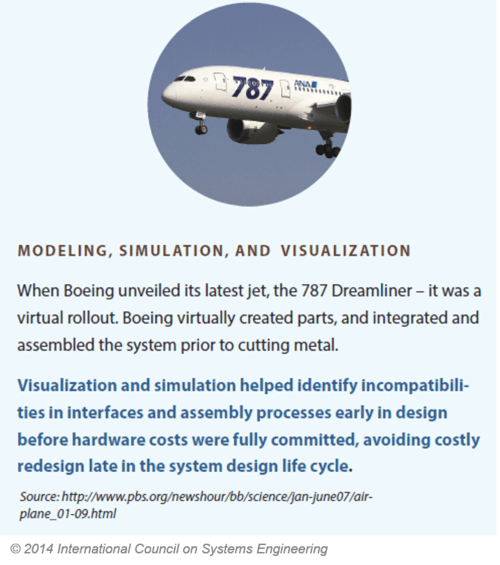
Figure 2: Description regarding the development of the Boeing 787 (Copyright INCOSE 2014)
Modeling, simulation, and visualization capabilities need to be provided in teams with expertise in specific areas and also with diverse backgrounds of design, engineering, hardware and software expertise, production, and operations and support disciplines. Collaborating across multiple engineering disciplines, across component and subsystem teams, and with hierarchical design standards and requirements, can ensure successful engineering, development, and production of very complex systems.
A prime example of this is the Boeing 787 Dreamliner effect. The industry-leading technology of the 787 Dreamliner entailed unparalleled fuel efficiency for greater flying ranges and allowed for new routes to optimize a carrier’s fleet; global partnerships were required with extensive coordination, engineering, automation, and production processes using new technology and tools; and employed a tremendous improvement in comfort and user experience for the customer to bring about “a better way to fly.”
The Boeing 787 Dreamliner expanded on the partnering and collaboration across many suppliers and producers of the various components/subsystems for this next generation fleet of airplanes. The INCOSE SE Vision – 2025 paper stated that: “visualization and simulation helped identify incompatibilities in interfaces and assembly processes early in the design before hardware costs were fully committed, avoiding costly redesign late in the system design life cycle”.
The future links noted below provide insight into the history, challenges, engineering, production, and supply chain documenting the successes for this new airplane from Boeing.
- Boeing 787 Dreamliner History – timeline of the history of the Boeing 787.
- Smithsonian Air and Space Magazine article presenting insight into the challenges Boeing had for assembling the planes – Inside Boeing’s 787 Factory.
- Interesting article on the level of collaboration that occurred for the design phase of the 787 Dreamliner – For Boeing, It Takes a Village to Build a New Airplane.
- A case study reviewing technology used to address the complexity of the Boeing 787 –Technology and Operations Management – A Course at Harvard Business School: Boeing: Using Digital to Address Complexity: “Boeing is using a diverse digital toolkit – tools such as augmented reality, cloud computing, internet of things (IoT), and advanced analytics – to meet both its own and its customers’ operational challenges”. Supply chain management is just one of the many complex challenges that Boeing needs to address for all of their suppliers.
- Video, titled Building the 787-9 Dreamliner, presenting a time lapse video of the transportation, integration, and build of this magnificent aircraft.
- Article on the increased ingenuity of the engineering teams to make the 787 a global partnership success in developing, designing, and producing this airliner.
- Boeing website presenting the complexity of the Dreamliner and how engineers across the globe have achieved a remarkable set of milestones and capabilities to produce the 787.
- Case analysis for the Boeing 787, where the complexity of the life cycle for the 787 Dreamliner is captured.
- Wikipedia write-up on the scale of the various manufacturers and suppliers to make the 787 a successful global engineering and production program.
The technology and tools available today are just the starting point of what may be achievable in the future. Simulation and visualization play a key role in understanding the complexity of systems before committing to costly investments to verify solutions before building them. Model-based Systems Engineering (MBSE) provides integrated modeling environments that can mimic the behavioral and physical attributes of systems prior to building any major component or subsystem. Virtual reality and modeling enable replication of concepts and designs into pre-production of components prior to building the final versions. 3D printers are advancing to the point that they not only can generate the prototypes, but actually produce the final components for operations. Advanced analytic techniques can surface key inter-dependencies and performance issues before costly re-engineering or production occurs. Cloud-based computing can enhance the modeling and simulation and data analysis capabilities shared across the program stakeholders. Collaboration tools support automated workflow, direct interaction between globally dispersed engineering experts, and increasing the agility of software and engineering development. Decision support tools augment modeling and simulation with data-driven information to make informed decisions on technical and programmatic decisions. Systems engineering can focus on ensuring that the all the pieces in a complex program work together to achieve the objectives of the program, while balancing the requirements against other factors.
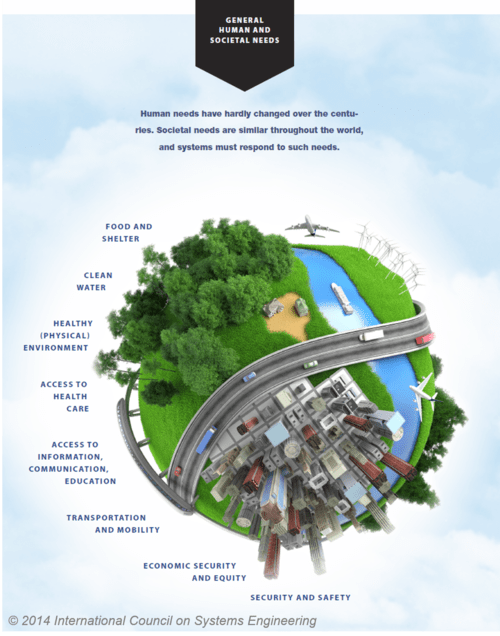
Figure 3: General human and societal needs (Copyright INCOSE 2014)
SEs and STEM-related professionals can take the lessons learned from the Boeing 787 Dreamliner program and identify and scale the successes from this global engineering partnership to apply to their specific project or program. Systems are becoming more and more complex. There are greater inter-dependencies among project teams, solutioning partners, and suppliers. Capabilities delivered are addressing global scalability, but yet focused on local and regional needs for the customers. Expectations are that engineering solutions and products must address social, environmental, and economic issues, as well as the coordinated efforts of the technical design, development, integration, testing, and support teams. Understanding these relationships and working with all technical and programmatic teams, SEs can ensure that future products and services will cover the eight major system characteristics that stakeholders are driving toward. We only have one planet, but we have many opportunities to correctly address the technical challenges through better engineering for global solutions. INCOSE can work with professionals in the SE and STEM-related areas to prepare them for the future. Doing engineering correctly is critical to the future of our planet and delivering capabilities that address the concerns and global sustainment in an economical and environmentally friendly manner to better society as a whole.
About the Author
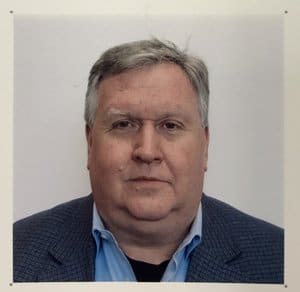 Mr. Taras Alexander Mykytyn has over 25 years of systems engineering experience developing, integrating, testing, and deploying complex systems and services into operations. A focus has been integrating systems engineering and program management activities. Taras earned a BS from Drexel University, Philadelphia, PA USA in Systems Engineering with a minor in Biomedical Engineering. He also earned an MS from the University of Maryland College Park, USA in Engineering Management with a minor in Systems Engineering with research dissertation on “Managing Large Scale Programs with Automated Tools”. Taras volunteers his time not only with INCOSE but he has interest in the local student community. Taras volunteers with Howard County high school students through the Engineering Design and Development class. He engages with the students three times a year to assist them with their project and to ensure progress to a final design review. Taras believes this is an excellent way to give back to the community and to our future scientists and engineers.
Mr. Taras Alexander Mykytyn has over 25 years of systems engineering experience developing, integrating, testing, and deploying complex systems and services into operations. A focus has been integrating systems engineering and program management activities. Taras earned a BS from Drexel University, Philadelphia, PA USA in Systems Engineering with a minor in Biomedical Engineering. He also earned an MS from the University of Maryland College Park, USA in Engineering Management with a minor in Systems Engineering with research dissertation on “Managing Large Scale Programs with Automated Tools”. Taras volunteers his time not only with INCOSE but he has interest in the local student community. Taras volunteers with Howard County high school students through the Engineering Design and Development class. He engages with the students three times a year to assist them with their project and to ensure progress to a final design review. Taras believes this is an excellent way to give back to the community and to our future scientists and engineers.

2.2 Analyzing the Effectiveness of Lean Systems Engineering to address Privacy and Confidentiality Challenges in Emergency Departments
by
George D. Grant
United States Department of Defense (DoD)
December 11, 2020
Email: ggrant6342@aol.com
Abstract
In today’s face-paced environment, healthcare Emergency Departments (EDs) are experiencing a significant increase in privacy and confidentiality issues. Privacy and confidentiality are critical elements to ensure information is provided to the right person, at the right time, and on a need-to-know basis. These challenges can lead to mishandling of patient records, disclosure of information, or loss of life. The purpose of this article is to analyze the effectiveness of Lean Systems Engineering (SE) methodologies on ED standards and its impact on privacy and confidentiality.
Introduction
This article discusses the impact of Lean Systems Engineering on privacy and confidentiality in healthcare, and in particular, identifies SE processes that are used to help mitigate problems. Moskop et al. (2005) reviewed the elements of privacy, such as the physical, informational, and decisional characteristics. “Physical privacy involves having no contact with other people, or being exposed to others; informational privacy prevents the disclosure of information; and decisional privacy is the ability to make decisions without interference from an outside entity. Confidentiality is similar to informational privacy in that the receiver of the information has an obligation not to disclose the information unless authorized to do so (Moskop et al., 2005).” In cases, where moral or legal issues are involved, it becomes increasingly difficult to uphold privacy and confidentiality.
The rationale for writing this article is to illustrate the portability of SE, and more importantly, how Systems Engineering (SE) can be used to reduce some of the challenges with respect to privacy and confidentiality in EDs. Areas addressed in this article include:
- Privacy and Confidentiality Challenges in Healthcare.
- Lean SE in Healthcare.
Privacy and Confidentiality Challenges in Healthcare
Due to the challenges facing the healthcare industry in areas such as quality and efficiency, lean is being viewed as a way to streamline and improve processes. The lean concept was developed to improve quality and efficiency in the manufacturing environment. However, many are realizing the benefits that can be achieved with lean methodologies in other industries, such as engineering, management, and healthcare.
Moskop et al. (2005) examined the challenges with privacy and confidentiality in areas including patient information being overheard by nurses and interactions with law enforcement, staff, and family members. Patients may be more reluctant to provide important medical information to doctors or nurses if they feel that their privacy or confidentiality is being infringed upon. The Health Insurance Portability and Accountability Act of 1996 (HIPAA), which was created to protect against these kinds of infringements, provides guidance: EDs may use and share the patient’s healthcare information without the patient’s authorization in the following situations (Moskop et al., 2005):
- Personal information can be provided to patient;
- Caregivers can use or disclose information for treatment, payment, and healthcare activities; and
- With the patient’s permission, they can disclose certain information.
The fact that there are varying levels of compliance throughout the healthcare industry is substantiated by the fact that there are many instances of privacy and confidentiality issues being reported. The Joint Commission on Accreditation of Healthcare Organizations (JCAHO) is the accreditation entity and responsible for developing standards and establishing measures of performance in privacy and confidentiality. Mosktop et al. (2005) provided additional clarity in understanding some of the organizations experiencing privacy and confidentiality issues. Having sound and effective standards is even more important in emergency situations, because decisions must be made quickly and the lack of standards can have a significant impact on the outcome.
The studies performed by Karro et al. (2005) indicated the level of patient infringements on privacy in EDs. In 2005, a two-week study was conducted at the St. Vincent Health Facility in Melbourne, Australia, where approximately 32,000 emergencies were addressed annually. The study evaluated the severity, impact, frequency, and risk factors associated with privacy. There were four privacy areas addressed in order to understand the magnitude of the problem:
- Overhearing medical or personal information;
- Being overheard;
- Having private body parts exposed; and
- Seeing other body parts.
The survey was distributed to approximately 1,169 patients. The results indicated that there were privacy vulnerabilities. Out of the 235 patients that responded, 105 reported 159 violations. This validated some of the ongoing challenges in healthcare privacy. The results also indicated that the longer a patient was being treated, the more likely a privacy incident might occur.
McHugh et al. (2011) provided strategies for crowding issues, such as measuring performance, identifying challenges, and taking the proper steps to mitigate problems. One of the areas he pointed-out that should be investigated further was privacy and confidentiality. In particular, are privacy and confidentiality independent or dependent types of problems? Crowding could be one of the underlining issues related to wait times, which could cause several problems in an effort to serve patients more efficiently.
Knopp et al. (1999) analyzed some of the challenges EDs are facing with privacy and confidentiality. The authors emphasized the difficulty involved with ensuring privacy and confidentiality for patients associated with factors such as the availability of IT, Internet, faxing between EDs, group sharing of patient records, physical environment of ED rooms, and third-party access providers. All of these added capabilities also contribute to patient risk and exposure. Some of the solutions offered consisted of: separation walls, limiting access to locator boards, respecting patients’ privacy, and physicians becoming more of a role model throughout the process.
Lean Systems Engineering in Healthcare
Several Lean SE methodologies were identified that can be used to support some the ongoing issues and challenges with privacy, confidentiality, and standards surrounding EDs. For example, Oppenheim et al. (2011) examined the value of integrating lean and SE as a way of improving quality, efficiency, and processes in organizations. SE could benefit by incorporating proven lean principles into its framework to streamline processes and reduce costs. The authors offered a five step framework that is integrated into the overarching SE process, which included:
- Ensuring one is providing customer value rather than a deliverable based on what one feels should be accomplished;
- Mapping the value stream, which involves defining the current and future architecture or end-to-end process flows;
- Reducing wasteful activities (non-value) to ensure processes can be optimized;
- Allowing customers to determine what they believe is important (customer pulling); and
- Conducting continuous process improvement throughout the project lifecycle.
Toussaint et al. (2013) mentioned how the successful implementation of lean healthcare could improve quality and efficiency, and also reduce costs. The authors provided a framework that can be used to improve quality, efficiency, and control of costs by leveraging six key principles for ensuring lean success, such as:
- Having an attitude of continuous improvement;
- Value creation, which involved reviewing the problem, developing a value stream mapping, describing the ideal state, analyzing gaps between the current and target architecture, developing the processes, testing, and transitioning to production;
- Unity of purpose to define the standard processes for how things should work;
- Respect for who’s doing the work, which allows employees to become further empowered;
- Visual tracking of information and obtaining more customer involvement; and
- Developing a flexible regiment, which requires formalizing non-standard work.
Kopach-Konrad et al. (2007) argued that healthcare could benefit from SE, by applying its principles to enhance the overall system. The authors discussed six SE principles needed to ensure that a reliable system was being implemented:
- Defining the purpose and scope, functions, performance measures, and performance thresholds;
- Collecting and analyzing the data;
- Designing, validating, and verifying that the correct data models are being used;
- Using models to understand system behavior;
- Optimizing the models; and
- Developing the implementation and evaluation plans for the system.
The authors also discussed the importance of leveraging some of the engineering modeling tools such as project management, statistical analysis, and process mapping to optimize performance. The healthcare environment is a departmentalized structure (stove-piped), which may present challenges to successfully implementing a solid SE framework in EDs. In addition, healthcare professionals may not always think systematically or holistically when building capabilities. This provides a compelling argument for why SE methodologies should be used in healthcare.
On May 1, 2019, the 5th Annual Systems Engineering in Healthcare Conference was held in Minneapolis, MN. The conference included a variety of speakers and seminars to include SE Skills and Tools, Healthcare Delivery, Model-based Systems Engineering (MBSE), Agile Methods, and more. The “5th Annual Systems Engineering in Healthcare Conference” reinforced INCOSE’s commitment to applying SE in Healthcare.
Summary and Conclusions
Based on the research conducted, there appears to be value in applying Lean SE to solve ED privacy and confidentiality issues. However, further research is required to identify best practices and standards employed to mitigate privacy and confidentiality problems, as well as systems and tools to assist in the automation and compliance of standards. Automated tools can be used, but cannot overcome the lack of organizational processes or complex systems that are not adequately defined (Rebentisch et al., 2004). Identifying and integrating tools and capabilities is critical, but improving quality, increasing efficiency, and reducing costs within EDs are also important.
Table 1 presents a summary of the Lean SE methodologies discussed in this article.
Table 1. Summary of Lean SE Methodologies
| Oppenheim et. al. (2011) | Toussaint et al. (2013) | Kopach-Konrad et al. (2007) |
|
|
|
Oppenheim (2012) is helping to lead the International Council on Systems Engineering (INCOSE) Lean SE Working Group which is identifying Lean Enablers for SE and Lean Enablers for managing engineering programs in areas, such as:
- Manufacturing and supply chain management;
- Administration and office work;
- Healthcare delivery;
- Education;
- Product development; and
- Other areas.
Programs fail as a result of people, not technology (Oppenheim, 2012). Oppenheim recommended using a formal value stream mapping process to eliminate waste (Table 2), and lean tools to define information flows to improve outcomes.
Table 2. Engineering Value Stream Mapping Process
| Getting Started | Mapping the Current State Value Stream | Identifying Waste | Improving the Process |
| Identifying Key Stakeholders | Mapping Tasks and Flows | Understanding Types of Waste | Establishing What Takes Time |
| Defining the Team | Collecting Data | Identifying Different Types of Waste | Assuring Information Availability |
| Training the Team | Evaluation of Value | Balancing the Line | |
| Bounding the Problem | Understanding Iterations | Eliminating Inefficient Reviews | |
| Defining the Value | Eliminating other Wastes | ||
| Understanding Value Creation | Mapping the Future State |
Oppenheim, B.W. (2013, October). “Lean Enablers for Systems Engineering and
Lean Enablers for Managing Engineering Programs”. International Council on
Systems Engineering (INCOSE) Northstar Chapter Presentation.
List of Acronyms Used in this Paper
| Acronym | Explanation |
| ED | Emergency Department |
| HIPAA | Health Insurance Portability and Accountability Act of 1966 |
| INCOSE | International Council on Systems Engineering |
| JCAHO | Joint Commission on Accreditation of Healthcare Organizations |
| NSBE | National Society of Black Engineers |
| PMI | Project Management Institute |
| SE | Systems Engineering |
References
Karro, J., Dent, A.W., and Farish, S. (2005, April). “Patient Perceptions of Privacy Infringements In an Emergency Department”. Journal of Emergency Medicine Australasia, 117(2), 117-123. doi:DOI: 10.1111/j.1742-6723.2005.00702.x.
Kopach-Konrad, R., Lawley, Criswell, M., Hasan, I., Chakraborty, S., Pekny, J., and Doebbeling, B.N. (2007, December). “Applying Systems Engineering Principles In Improving Healthcare Delivery”. Jounal of General Internal Medicine, 22(3 Supplement), 431-437.
Knopp, R.K., Satterlee, P.A. (1999, May). “Confidentiality In The Emergency Department”. Journal of Emergency Medicine Clinics of North America, 17(2), 385-396.
McHugh, M., Van Dyke, K., McClelland, M., and Moss, D. (2011, October). “Improving Patient Flow and Reducing Emergency Department Crowding: A Guide for Hospitals”. Health Sciences Research Commons, 1-49.
Moskop, J.C., Marco, C.A., Larkin, G.L., Gelderman, J.M., and Derse, A.R. (2005, January). “From Hippocrates to HIPPA: Privacy and Confidentiality In Emergency Medicine-Part I: Conceptual, Moral, and Legal Foundations”. Journal of Annals of Emergency Medicine, 45(1), 53-59. doi:doi:10.1016/j.annemergmed.2004.08.008.
Oppenheim, B.W., Murman, E.M., and Deborah A. Secor, D.A. (2011, Spring). “Lean Enablers for Systems Engineering”. International Council on Systems Engineering (INCOSE), 14(1), 29-55. doi:10.1002/sys.20161.
Oppenheim, B.W. (2013, October). “Lean Enablers for Systems Engineering and Lean Enablers for Managing Engineering Programs”. International Council on Systems Engineering (INCOSE) Northstar Chapter Presentation.
Toussaint, J. S. and Berry, L. L. (2013). “The Promise of Lean in Healthcare”, Mayo Clinic Proceedings, 88(1):74-82.
INCOSE Healthcare Working Group (2019, May). “5th Annual Systems Engineering in Healthcare Conference”. International Council on Systems Engineering (INCOSE).
Rebentisch, E., Rhodes, D.H., Murman, E. (2004, April). “Lean Systems Engineering: Research Initiatives in Support of a Paradigm”. Publication/Presentation at the Conference on Systems Engineering Research.
About the Author

George Grant presently works for the United States Department of Defense (DoD) as an electronics systems engineer. Over the past 35 years, he has led and supported a wide-array of projects in telecommunications, Information Technology (IT), engineering, and project/technical management environments. He is a member of INCOSE, National Society of Black Engineers (NSBE), and the Project Management Institute (PMI). When possible, he works as a volunteer to help K-12 students become aware of opportunities in Science, Technology, Engineering, and Math (STEM) as a member of the NSBE College Initiative team. George holds a Degree of Engineer, Systems Engineering from George Washington University; Master of Engineering (M.Eng.) in Engineering Management from Stevens Institute of Technology); M.S. in Systems Engineering from Johns Hopkins University; M.S. in Telecommunications Management from University of Maryland; B.S. in Electrical Engineering Technology from Kennesaw State University; and A.S. in Engineering Technology and Mathematics from Atlanta Metropolitan State College.
George is an INCOSE Certified Systems Engineering Professional (CSEP) and is Defense Acquisition Workforce Improvement Act (DAWIA) Engineering (ENG) Level 3 Certified.
3.3 A Systems Engineering Approach to Industrial Cybersecurity
by
Byeric Cosman
ARC Advisory Group
Ensuring the cybersecurity of information systems and associated networks has always been challenging. Serious vulnerabilities are identified on a regular basis and new threats continue to emerge to exploit those vulnerabilities. Industrial systems share many of the same vulnerabilities and are subject to the same threats. However, the consequences may be very different and, in some cases, more severe. This makes cybersecurity an imperative for the asset owner, who ultimately must bear the consequences of an adverse event.
The threat is ongoing and evolves constantly, so cybersecurity should not be viewed as a one-time “project” with a defined beginning and end. Since there is no such thing as being fully secure, the preferred approach should be ongoing, similar to the approach used for safety, quality, and other performance-based programs.
Similarly, it is not sufficient to focus on specific elements. Instead, asset identification and management, patch management, threat assessment, and so on are all parts of a broader response that must address all phases of the life cycle.
This response begins with identifying principal roles and assigning responsibilities and accountability for each stage of the system life cycle. With these addressed, the well-established systems engineering discipline can provide effective tools and methods to help define, plan, and conduct the response.
Applying such a formal discipline may be daunting for those not skilled and experienced in this area, but guidance and reference material are available from organizations such as NIST and INCOSE. Service providers and consultants can also provide more specialized expertise if required.
The Common Industrial Cybersecurity Response
The imperative to make substantial improvements in the cybersecurity of industrial control systems and associated networks is well established. The risk to these systems changes regularly as new threats and vulnerabilities are identified. While the potential consequences may be different for industrial systems, they share many of the same vulnerabilities and are subject to the same threats as information systems that use the same or similar technology.
While not all cyber-attacks are deliberate and intended, the potential consequences are often serious. Monitoring, control, and safety systems play a critical role in process manufacturing, discrete manufacturing, and virtually all industries that are part of the critical infrastructure. This makes cybersecurity an imperative for the asset owner, who ultimately must bear the consequences of an adverse event.
The typical response to cybersecurity risk has been inherently reactive, involving one or more specific, focused initiatives. For example, asset owners isolate, patch, or otherwise protect installed systems; while system, product, and service suppliers provide and validate patches for identified vulnerabilities. Certainly, these measures are required when first addressing the problem, but by themselves, are insufficient over the long term. Individual initiatives (e.g., asset identification, patching, isolation, etc.) are often not adequately coordinated and, in some cases, may include implicit assumptions that must be challenged.
Viewing Security as a Project
Some people assume that the response to cybersecurity threats should be structured as a project, implying that it has a well-defined end or outcome. This is incorrect, as it assumes that there is a problem that can be “solved” in a foreseeable timeframe. A more realistic approach is to view cybersecurity as similar to safety, quality improvement, and other performance-based programs. Security is not an absolute objective, but rather an attribute of systems and technology that must be monitored and managed with continuous improvement in mind.
Oversimplifying the Problem
Taking a project approach can also oversimplify the nature of the challenge. For example, the absence of accurate inventory records can lead to a singular focus on asset discovery and identification. While it is true that you cannot secure devices that you are not aware of, this is but one early step in a more comprehensive response. While a single database or repository that contains the inventory of all systems across an enterprise could help, this is often not feasible and may not be necessary if there is adequate access to and sharing of information in separate data-bases.
Another example of oversimplification is a singular focus on patch management. While it is certainly a worthwhile goal to keep systems at current patch levels, there are situations where this is impractical, or even impossible. The use of compensating controls such as isolation devices is an acceptable strategy for such situations. The goal must be to implement a patching protocol that keeps as many systems as possible at current software revision levels, while accommodating situations where this is not possible.
Responsible Organization
Confusion and, in some cases, conflict related to the disciplines or organizations best positioned to address cybersecurity is another persistent theme that limits real progress. The persistent “IT versus OT” discussion has been going on for years, often driven by bias and lack of trust between the respective organizations. The reality is that no single organizational response or model is best for all situations; a successful response to cybersecurity risk typically requires experience and expertise from several disciplines. This includes but is not limited to engineering, information security, and network design. The focus must be on assembling a program that includes all these disciplines, working against a coordinated plan.
Inadequate or Inappropriate Skills
In some situations, the necessary skills and expertise may not be readily available. Asset owners may not have internal experts in areas such as network design and monitoring or system configuration and may rely heavily on a third party.
Process Definition
The traditional response also includes developing or defining formal processes for each aspect of the cybersecurity response. These must include clear assignment of responsibility and accountability in areas such as change management, system monitoring, and performance reporting. Defining and documenting formal processes is not enough. Audits commonly find situations where the processes have been defined, but people don’t follow them. It is also essential to have clear measures or metrics to determine the effectiveness of these processes and make any improvements required.
While all the above are valid components of the cybersecurity response, none are sufficient by themselves. A comprehensive program must include many if not all these essential elements, along with other supporting elements.
Essential Elements
Although there are many possible approaches to addressing cyber risk, several common elements provide the foundation of any comprehensive program.
System Life Cycle
It is a fundamental principle that security is required across the entire life cycle of products, systems, and solutions. The life cycle concept is well established and has been referenced in international standards such as IEC 24748 (Systems and Software Engineering – Life Cycle Management, Guidelines for Life Cycle Management). This standard defines a system as a combination of interacting components organized to achieve one or more stated purposes. These components can be any combination of hardware, software, and supporting data. In all but the simplest situations, this concept is extended to define a system of interest composed of multiple related systems. This is generally described as a “system of systems.”
Systems and their components all have a specific life cycle, evolving from initial conceptualization through eventual retirement. Fully addressing security requires addressing each life cycle phase by defining the accountability and responsibilities of each of several principal roles.
The IEC 24748 standard defines six life cycle stages:
- Concept – Assess new business opportunities or mission assignments and develop preliminary requirements, a feasible architecture, and design solution.
- Development – Develop a component or system that meets stakeholder requirements and can be produced, tested, evaluated, operated, supported, and retired.
- Production – Produce or manufacture the component or system, test it, and produce related enabling systems as needed.
- Utilization – Apply or operate the component or system, delivering services within intended environments and achieve continuing operational effectiveness.
- Support – Begins with the provision of maintenance, logistics, and other support needed to operate the component or system and is completed with the retirement of the system-of-interest and termination of support services.
- Retirement – Provides for the removal of a component or system and related operational and support services, including appropriate disposal of specified system components. It begins when a component or system is taken out of service.

Figure 1: Lifecycle Comparisons
The ISA/IEC 62443 standards have modified the general model slightly to fit better within the context of industrial system security. Figure 1 (above) compares the two models. In addition to changes to the names of some phases (e.g., “support” to “maintenance”) the production and utilization phases have been changed to the three separate phases of implementation, validation, and operation. This allows for additional emphasis on systems integration. Specific security-related responsibilities and tasks are associated with each phase of the revised model.
It is not critical for the asset owner to fully understand all the details and nuances associated with all the stages of this life cycle, but awareness of the life cycle is essential, along with the specific requirements that must be met at each stage.
Contributing Roles
A well-defined life cycle is important, but not sufficient in and of itself. A clear set of role definitions is also essential. The ISA/IEC-62443 standards define several principal roles in terms of activities, responsibilities, and accountability at various stages of the life cycle:
- The end user or asset owner is accountable for the automation systems and the associated risks throughout the life cycle including its cybersecurity posture. Within a given organization, operations, engineering or some combination of these may fill this role. They may delegate specific responsibilities for design and deployment to service providers.
- The operator is responsible for the operation of the automation systems including their cybersecurity posture.
- The integrator is responsible for the design and deployment of automation systems as well as developing a security defense-in-depth concept that includes technical measures, policies, and procedures.
- The maintainer is responsible for maintaining the automation system, including technical measures, policies, and procedures to fulfill the cybersecurity posture. Maintenance includes updates of hardware or software components.
- The developer is responsible for developing products with adequate security capabilities including supplying integration and hardening guidelines as well as support for handling vulnerabilities.
Those filling the above roles must collaborate and cooperate at each stage of the life cycle to achieve the desired results.
System Complexity
Adopting a life cycle approach and identifying and assigning principal roles are critical first steps in developing an effective cybersecurity program. This avoids the tendency to adopt “pin hole” views of the problem being addressed. However, several realities add to the complexity of the task. It is important to acknowledge, understand, and address each of these in a deliberate and measured manner.
It is important to remember that the technology and products employed in industrial systems are inherently flawed in that they are certain to include both identified and unidentified vulnerabilities. Some of these result from imperfect development practices; others may be the consequence of specific design decisions. Adding new technology to the system may or may not improve the level of security but will almost certainly increase complexity.
More Information
4. SYstems Engineering News
| 4.1 INCOSE Publishes October 2019 Edition of INSIGHT
Feature: Diversity in Systems Engineering |
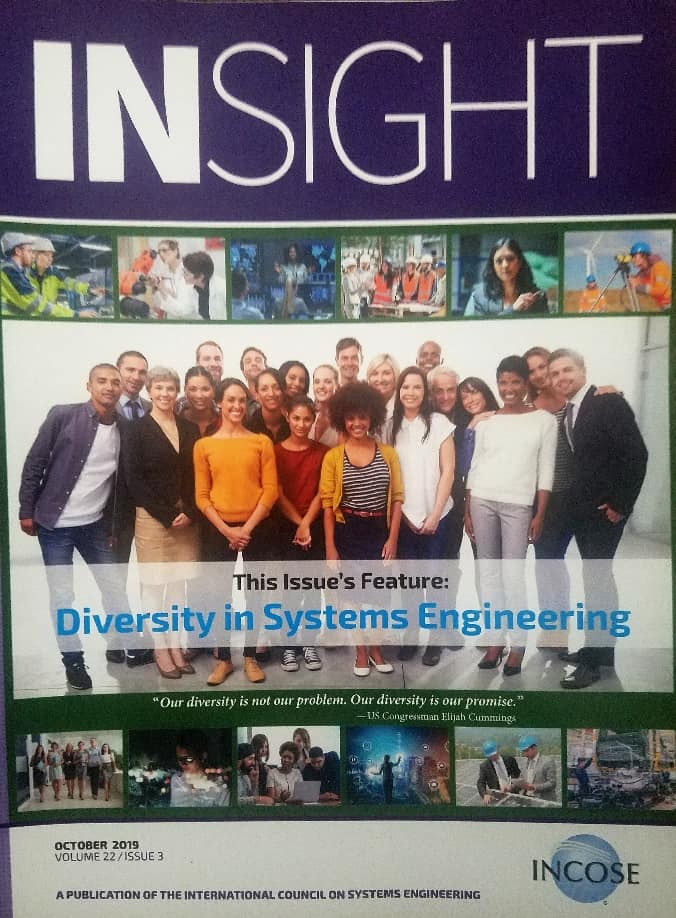
Figure 1: Cover of the October 2019 Edition of the INCOSE INSIGHT Magazine
INSIGHT is published in cooperation with John Wiley & Sons as a magazine for systems engineering practitioners. INSIGHT’s mission is to provide informative articles on advancing the state of the practice of systems engineering. The intent is to accelerate the dissemination of knowledge to close the gap between the state of practice and the state of the art as captured in Systems Engineering, the Journal of INCOSE, also published by Wiley. The focus of the October issue of INSIGHT is diversity in systems engineering.
Outline of the edition
- The first of the articles is: “Working Across Cultural Boundaries: The Many Faces of Diversity” by Cecilia Haskins. This article investigates the connections between diversity in systems engineering teams, and quality, innovation, and competitive advantage. She looks at the many faces of diversity from a cultural viewpoint and harvests some useful wisdom from the literature and her own experiences as an American living and working in Norway. She concludes that the path to successful appreciation of others comes from maintaining an open mind, alongside careful reflection of the viewpoints of colleagues and friends, and an open attitude toward the value of continuous learning and exploration of the “ologies.”
- “Towards a More Diverse INCOSE” by former president Alan Harding and chief of staff Andy Pickard establishes an understanding of INCOSE’s current diversity based on available data, and in doing so addresses the following questions:
- Why is it important for INCOSE to be diverse?
- What do we mean by diversity with respect to INCOSE?
- What do we know about INCOSE diversity today, and how does it compare to equivalent societies and the wider communities in which we operate?
- Where are the gaps in current practice?
- What can we do to improve INCOSE diversity?
- “Harnessing the Diversity of Ideas for Competitive Advantage” by Johnny Morgan states that individuals are the sources of new ideas, but it is organizations that transform these ideas into value- delivering innovations. He examines the relationship of maximizing information diversity to promote idea discovery while minimizing work force diversity to promote the sharing and acceptance of these ideas. Johnny then discusses the concept of inclusion as a necessary team skill for organizations to deliver these ideas as innovations. He concludes by identifying systems engineering behaviors that create a diverse environment for idea discovery and an inclusive team environment that overcomes challenges and transitions ideas into delivered innovations, thus providing a competitive advantage.
- “INCOSE Practitioners Challenge 2019: Clean Water and Sanitation in the Ganges River Basin” by Omar El-Haloush, Stephen Powley, Yash Kaushik, and David Flanigan speaks to the need to examine a diversity of factors in looking to solve the challenges of our time. They show that no one challenge can be solved in isolation from other challenges facing our world.
- “Overcoming the Male Leadership Culture” by Rick Dove speaks to both men and women, collectively, and individually. For men that feel empathetic and supportive of gender equality, it will suggest why your empathy and support may not be what you think it is. For women who want to understand the nature of the inequality problem, it indicates the key elements of what perpetuates inequality as a means to help address it. The principle goals of Rick’s article are to expose some key elements of the problem space, and to create an appreciation for the values of social sensitivity in working relationships and in leadership.
- “Thoughts on Modern Barriers and How Systems Engineers Can Help to Overcome Them” by Lucio Tirone describes cultural walls that are erected when anyone claims superiority; be it of one’s country, faith, race, or gender over another. The spreading of such barriers is a natural response of the danger human beings feel when we see our property, values, or loved ones under threat from something lying outside of our control. However, erecting walls to protect our property, values, and loved ones is rarely the best solution to the problem, as millennia of history has shown us. Lucio addresses the cultural tools that modern societies should strive to put in place to overcome the tendency to close themselves behind falsely protective barriers.
- “Overcoming Challenges on an International Project to Advance Systems Engineering” is a work of short recollections from the authors who participated in The Body of Knowledge and Curriculum to Advance Systems Engineering (BKCASE) project’s dual product development cycle that spanned a three-year period from the September 2009 to December, 2012. During this timeframe, BKCASE authors met quarterly at various locations, primarily in various regions of the United States, but also in Stockholm, Sweden; Toulouse, France; London, England; and Rome, Italy (BKCASE, 2009-2019). The team successfully worked through challenges and differences to produce The Guide to the Systems Engineering Body of Knowledge (SEBoK) wiki and a Graduate Reference Curriculum for Systems Engineering (GRCSE).
- “Inclusive and Consequential by Design: ‘Futurefying’ New Product Development Through Vision Concepting” by Woodrow Winchester states that in meeting the new technology-based product development challenges of the 21st century (such as artificial intelligence products and technologies), the systems engineer who is engaged in new product development must not only grapple with technical considerations but also the socio-cultural consequences of practices and outcomes (solutions). These unintended consequences by and through design could include issues of privilege, bias, and exclusion. Unfortunately, often as a function of the depoliticization of Western engineering education, and the perspectives, viewpoints, and beliefs of the narrow demographic dominating technology design (white and Asian, cisgender male, middle/upper class, urban, and heterosexual), the systems engineer is often ill-equipped to appropriately understand and address these nontechnical concerns. The afforded constrained perspective can cultivate design decision making that can lead to technological solutions that are devoid to the needs and considerations of socio-culturally diverse user groups. Traditional human-systems integration approaches to new product development often are not enough. It is essential systems engineers consider impacts on people, whether these impacts are unintended consequences or designs that exclude certain groups or disadvantage them in some way. We need more inclusive and consequential approaches to new product development. The interjection of futures thinking offers a way forward.
- “Globalizing the Certification of Systems Engineers” by Courtney Wright takes on the challenge of how we define an international professional society or its international certification program. The article suggests that we start by looking at three factors: 1) May people from more than one country participate? 2) Can people from more than one country participate? 3) Do people from more than one country participate? Covering all countries and referring to INCOSE as a global certification program rather than an international certification program is a much greater challenge. In the INCOSE context, international means including some other countries, often those with similar cultures or technologies, whereas global is both broader and deeper, and from the INCOSE perspective, this includes modifying the INCOSE baseline certification practices in response to feedback from other cultures.
INSTRUCTIONS FOR VIEWING:
The entire issue of INSIGHT Volume 22, No. 3 is now available to INCOSE members for viewing in the INCOSE Connect Library: INCOSE Connect/Library/INCOSE Practitioners Magazine/PDF or through the this link.
INSIGHT Volume 22 No. 3 will be available later on the Wiley Online Library and members will be notified in a separate announcement when it is available.
4.2 Garry Roedler Awarded the IEEE Lifetime Achievement Award
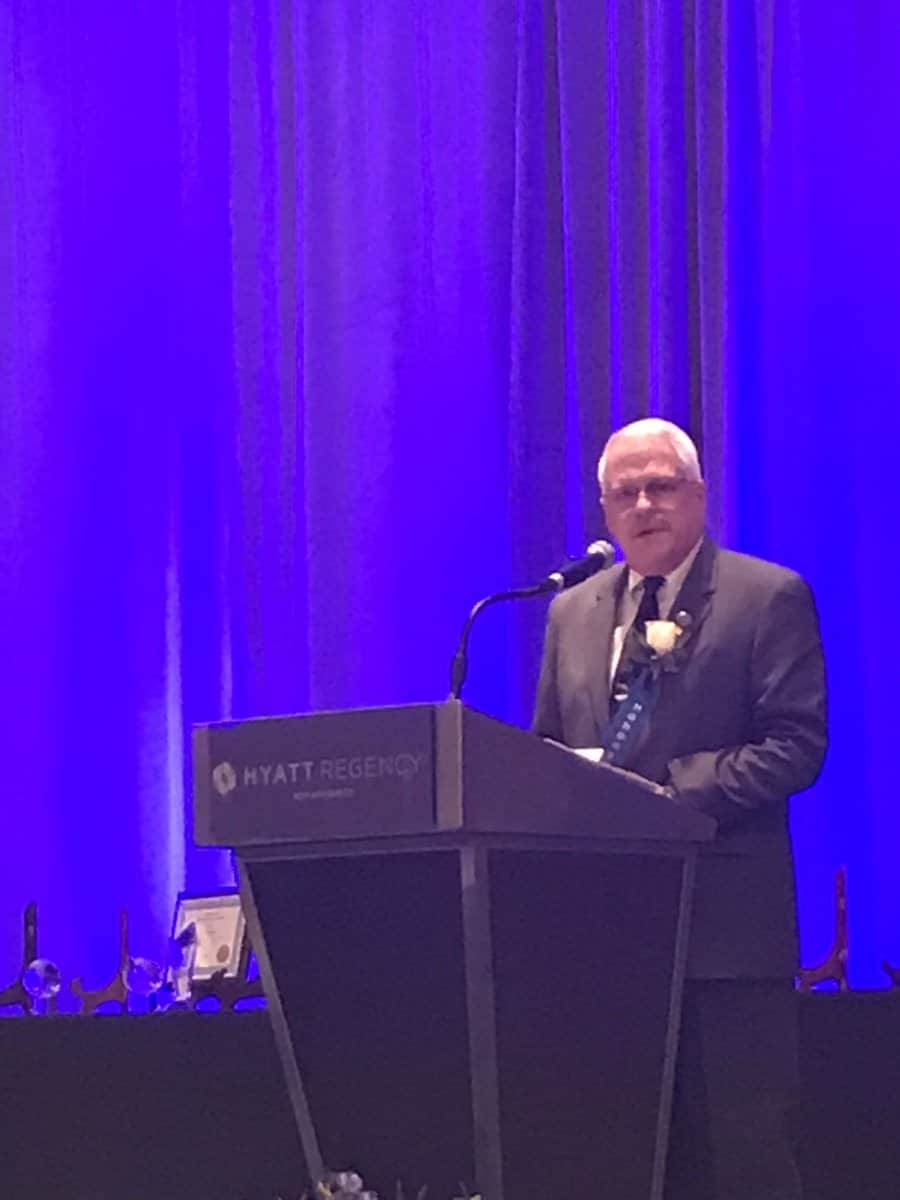
On the 8th of November 2019, the IEEE Standards Association (IEEE SA) awards took place. The annual event held at The Hyatt Regency in New Brunswick, NJ, USA recognizes outstanding participation in leading standards development. At the awards ceremony, INCOSE President Garry Roedler, received the IEEE SA Lifetime Achievement Award for significant technical contributions to a standard committee or field of interest. Garry has contributed to IEEE standards on systems engineering for more than 22 years. Well done Garry!
4.3 Contextual Engineering Improves the Success of Projects in Non-Industrial Societies
Source: University of Illinois College of Agricultural, Consumer and Environmental Sciences
Humanitarian engineering projects often focus on bringing western technologies to non-industrialized societies but environmental and cultural factors in these locations may be very different from conditions in the West, and the projects may not meet client needs if engineers do not fully understand the context in which they are operating.
A new study from the University of Illinois, published in the Journal of Engineering, Design and Technology, takes a look at the biases that may influence the effectiveness of international engineering efforts implemented by development organizations such as Engineers Without Borders.
The study’s author Ann-Perry Witmer conducted an in-depth analysis of the motivations and beliefs of engineers working on international projects. She says her research is unique because it combines technology with anthropological insights.
“As engineers we think we’ve got all the technical solutions, but we tend to neglect where the project is being done, and the people we’re working with,” says Witmer, a lecturer in the Department of Agricultural and Biological Engineering in the College of Agricultural, Consumer and Environmental Sciences and The Grainger College of Engineering at U of I.
Contextual engineering is a new approach that can help overcome those hurdles, Witmer says, by merging technical knowledge with a place-based understanding of conditions that inform the process.
Witmer’s research grew out of her experiences as a practicing engineer, specializing in the design of water systems for communities. She has worked on numerous projects in Central America, South America, Asia and Africa, and she advised Engineers Without Borders at the U of I for the past five years.
4.4 SEBoK Version 2.1 Released
On 31 October 2019, the SEBoK Governing and Editorial Bodies announced the release of SEBoK V2.1 There are a number of updates to Version 2.1:
- Addition of bylines to those articles for which one can track their origins. As of this release, the contribution of lead authors and additional contributing authors will be recognized. It is the hopes of the editors that these contributions will be beneficial to the authors in their professional lives – being able to prove their contributions to this important knowledge base.
- Glossary bubbles have been updated to readable and the occasional errors users encountered should all be corrected.
- New articles on:
- Digital Engineering
- Mission Engineering
- Set Based Design
- MBSE Adoption Trends 2009-2018
- Updated content on Resilience, Human Systems Integration, and Capability Engineering.
- Substantial update of the content to Part 1 (SEBoK Introduction).
- Video elements have been incorporated
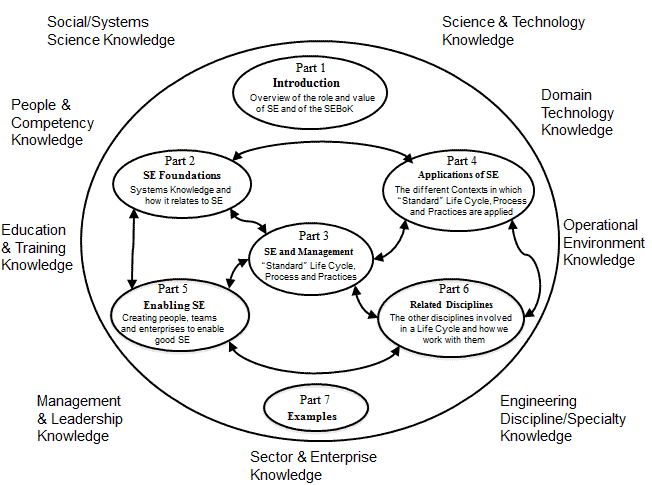
Figure: Scope of SEBoK Parts and Related Knowledge
Explore the newest SEBoK release.
4.5 Paperless Presentation Submissions for the INCOSE IS 2020 Due 16 February 2020
If you did not manage to get a paper, panel or tutorial submission in on time (22 November 2019), there is still an opportunity to participate in the INCOSE International Symposium 2020 by way of paperless presentations. Abstract submissions for paperless presentations are due on 16 February 2020.
The conference will be held in Cape Town, South Africa from 18-23 July 2020.
View the guidelines for submission here.
4.6 INCOSE Atlanta Chapter to Host Holiday Social
On the 19th of December the INCOSE Atlanta Chapter will host a Holiday Special to celebrate the holiday season and offer Atlanta Chapter members a chance to socialize before year end.
The program is taking place at Chicago’s Steak and Seafood in Roswell, Georgia from 5pm to 7pm and includes a complimentary meal. Attendance is limited so be sure to RSVP to scakat@aol.com if you are looking to attend.
View the event flyer here.
4.7 The Telegraph STEM Awards 2020
The Telegraph STEM Awards 2020 is an opportunity for the UK’s undergraduates to present world-changing ideas to some of the leading names in British industry – and potentially win £25,000 and a bespoke mentoring program. The annual awards were set up seven years ago to recognize the importance of science, technology, engineering and mathematics – and the students who study them.
The STEM Awards are formed of challenges in key STEM sectors, set in partnership with leading employers in these sectors. To enter, students need to come up with a solution to one of the following challenges and enter it before the closing date of Monday 17 February 2020.
STEM 2020 Challenges (as described by the Telegraph website):
Defense Technology
Sponsored by BAE Systems
The challenge: Which technologies could students focus on to improve the next generation of fighter jets? What are the challenges faced currently by the defense technology industry? Which technologies are already disrupting invention in this field?
Innovation
Sponsored by Semta
The challenge: Demonstrate the innovative use of new or emerging technologies for associated building services engineering in modular construction to improve the ease of assembly, safety, efficiency, quality, environmental impact or value to customers.
Sponsored by GSK
The challenge: How would you use innovative science and technologies to unlock potential medicines or vaccines? Would you focus on one disease or technology that could support medicines or vaccines across multiple diseases? Would you look at prevention, cure, diagnosis? The best ideas will tie in with existing strategies and GSK’s strengths.
Sponsored by McLaren
The challenge: Electrification of powertrains brings new opportunities and challenges for the automotive industry. McLaren Automotive is committed to innovation in powertrains alongside using lighter, composite materials to bring both performance and efficiency benefits while maintaining drivers’ engagement and experience. What innovative ideas do you have to electrify the future of the automotive industry? What new designs can you propose, to be introduced cost-effectively into future McLaren road cars, or across the wider automotive industry? Whatever your approach, you will need to demonstrate how your innovation can improve the performance and efficiency of tomorrow’s road cars.
Read more about the challenges and how to enter here.
5. Featured Organizations
5.1 Institution of Engineering and Technology (IET)

The Institution of Engineering and Technology is a multidisciplinary professional engineering institution. The IET was formed in 2006 from two separate institutions: the Institution of Electrical Engineers, dating back to 1871, and the Institution of Incorporated Engineers dating back to 1884. Its worldwide membership is currently in excess of 168,000. The IET’s main offices are in Savoy Place in London, England and at Michael Faraday House in Stevenage, England.
Source: Wikipedia.
From the IET Website:
“We inspire, inform and influence the global engineering community to engineer a better world. As a diverse home across engineering and technology, we share knowledge that helps make better sense of the world in order to solve the challenges that matter. It’s why we are uniquely placed to champion engineering.”
5.2 Research Institutes of Sweden (RISE)
Research Institutes of Sweden is a network of Research and Technology Organizations (RTOs), wholly or partly owned by the Swedish state. The RTOs within RISE perform industrial research and innovation. Some of the RTOs also perform testing and certification.
From the RISE Website:
“RISE is a unique mobilization of resources to increase the pace of innovation in our society. By gathering a number of research institutes and over a hundred test beds and demonstration environments under the umbrella of a single innovation partner, we create improved conditions for society’s problem solvers.
We gather around challenges and organize ourselves accordingly. Together, specialists in disparate fields innovate and resolve tough problems. Depending on the nature of the challenge and our assignment, we take on a variety of roles in the innovation system, and develop new ones as and when required. Together, we develop services, products, technologies, processes and materials that contribute to a sustainable future and a competitive Swedish business community.”
The UK Systems Society promotes the use of systems sciences in tackling society’s complex issues. Since 1975 the UK Systems Society (UKSS) has served as a means to increase awareness of systems thinking and to share experiences of practice. It provides vital meetings and publications to exchange ideas.
The society is run by a dedicated team:




Pauline Roberts Gary Evans Frank Stowell Ian Roderick
Committee member Committee member Committee member Committee member
Recent Posts
UKSS conference June 24th 2019
Editorial for IJSS Vol 5 No. 2
Keynote presentations from our June 2018 conference
Latest edition of IJSS Vol 5. 1
Business Systems Laboratory 6th International Symposium
Read more information about the organization here.
6. News on Software ToolS Supporting Systems Engineering
-
- IDAES Process Systems Engineering Software Now Open Source
Source: Berkeley Lab Computing Services
The Institute for the Design of Advanced Energy Systems (IDAES) has released the first open-source version of its next-generation computational framework and model library, created to optimize the design of process systems engineering solutions used to model advanced energy systems. The new framework can be accessed at the IDAES website.
Led by the U.S. Department of Energy’s (DOE) National Energy Technology Laboratory (NETL), IDAES was formed in 2016 to improve the efficiency and reliability of coal-fired power plants and accelerate the development of advanced fossil energy systems. It builds on the research and partnerships formed during the Carbon Capture Simulation Initiative (also funded by DOE through the Department’s Office of Fossil Energy), to create an open-source, non-commercial framework specifically for process systems engineering.
To achieve this goal, researchers from DOE’s Lawrence Berkeley and Sandia National Laboratories, Carnegie Mellon University, and West Virginia University have been working with their counterparts at NETL to create a multi-scale modeling and optimization framework for chemical engineers working in the power industry. To accelerate adoption by the energy systems operators, there is a strong industry component via membership on the Stakeholder Advisory Board (SAB). The SAB also includes representatives from other academic and research institutions.
“The goal has been to develop a framework within which process systems engineering solutions will be modeled,” Beattie said. “Berkeley Lab is bringing the software development and software engineering perspective to IDAES that other scientists in their specific disciplines do not always have. We have a lot of users with a chemical engineering background, which is essential, but they may not have the experience or expertise to turn the models they are writing into a software package that could be used easily by other chemical engineers.”
6.2 Visure Solutions Releases Web Interface for Requirements Management ALM Solution
Visure Solutions, Inc., the requirements Application Lifecycle Management (ALM) company, has launched Visure Web Reviewer 5.0, a web interface that allows users to review and approve requirements, test and design specifications. The new web-based version will allow various types of stakeholders (technical and non-technical users) of RM – including, but not limited to marketing teams, management teams, customers and suppliers – to navigate the ALM process.
The Visure Reviewer web-based interface aims to help increase efficiency and optimize processes while speeding the product development process by saving time, strengthening alignment, and ensuring quality and compliance.
“Requirements management is an intensive undertaking. We designed the platform to make it easier to track, test, analyze, visualize, and communicate to all stakeholders,” said Visure CTO Fernando Valera.
Read more about the web-based version of Visure here.
Read more about Visure solutions here.
6.3 Phoenix Integration Announces the Release of
ModelCenter 13.5
Phoenix integration announces the release of ModelCenter 13.5 which includes an increased level of support for Python, model-based systems engineering, and enhancements to the Prediction Profiler visualization.
Specific Features:
- Generic Python Support: Users can now replace the version of Python that ships with ModelCenter with their own 64-bit Python 3 installation
- Update to the Prediction Profiler plot to explicitly show the output variable value corresponding to specified input values
- Connect to MBSE capabilities (ModelCenter MBSE Plug-in)
- Correction of over 70 user-identified issues
The software installers and Release Notes can be downloaded here.
7. Systems Engineering Publications
7.1 Systems Engineering: A Complete Guide – 2020 Edition
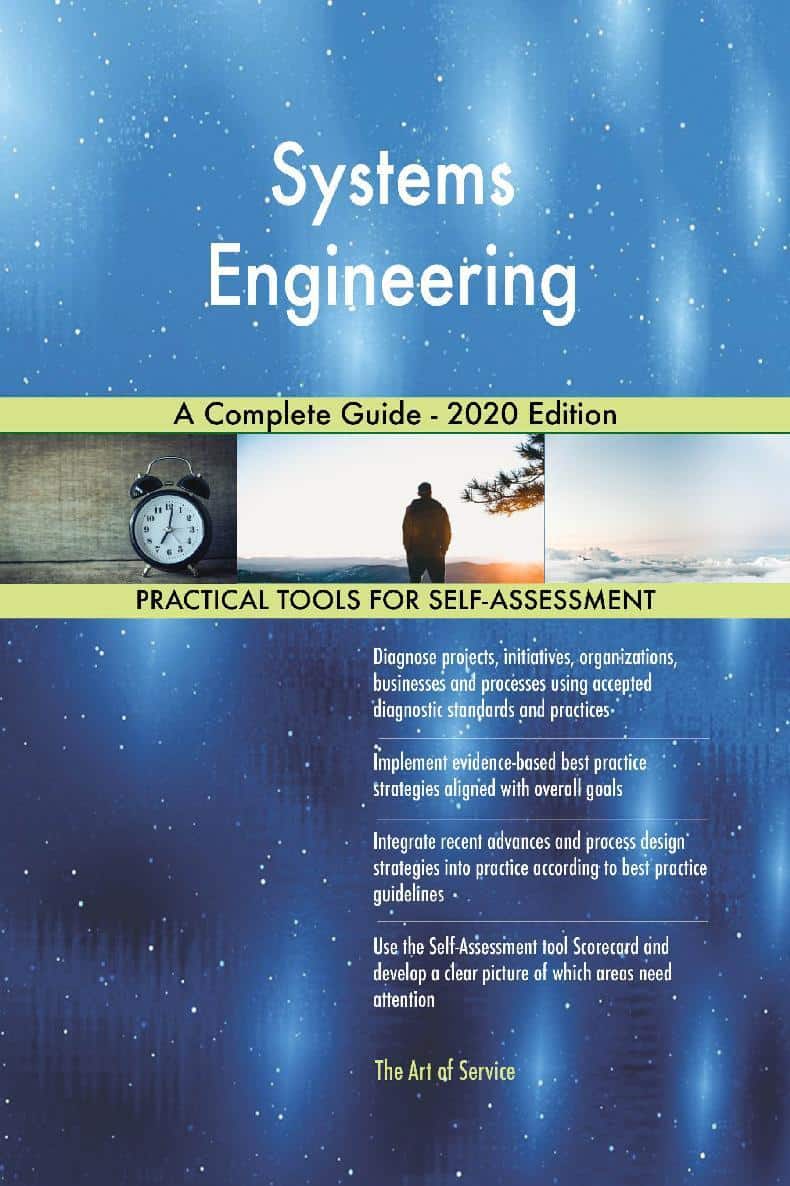
by
Gerardus Blokdyk
From the Amazon Website:
This instant Systems Engineering self-assessment will make you the principal Systems Engineering domain assessor by revealing just what you need to know to be fluent and ready for any Systems Engineering challenge. How do I reduce the effort in the Systems Engineering work to be done to get problems solved? How can I ensure that plans of action include every Systems Engineering task and that every Systems Engineering outcome is in place? How will I save time investigating strategic and tactical options and ensuring Systems Engineering costs are low? How can I deliver tailored Systems Engineering advice instantly with structured going-forward plans?
There’s no better guide through these mind-expanding questions than acclaimed best-selling author Gerard Blokdyk. Blokdyk ensures all Systems Engineering essentials are covered, from every angle: the Systems Engineering self-assessment shows succinctly and clearly that what needs to be clarified to organize the required activities and processes so that Systems Engineering outcomes are achieved.
The book contains extensive criteria grounded in past and current successful projects and activities by experienced Systems Engineering practitioners. Their mastery, combined with the easy elegance of the self-assessment, provides its superior value to you in knowing how to ensure the outcome of any efforts in Systems Engineering are maximized with professional results.
Your purchase includes access details to the Systems Engineering self-assessment dashboard download which gives you your dynamically prioritized projects-ready tool and shows you exactly what to do next. Your exclusive instant access details can be found in your book. You will receive the following contents with New and Updated specific criteria:
- The latest quick edition of the book in PDF
- The latest complete edition of the book in PDF, which criteria correspond to the criteria in the Self-Assessment Excel Dashboard
- The Self-Assessment Excel Dashboard
- Example pre-filled Self-Assessment Excel Dashboard to get familiar with results generation
- In-depth and specific Systems Engineering Checklists
- Project management checklists and templates to assist with implementation
Formats: Kindle, Paperback
Publisher: 5STARCooks (September 19, 2019)
ASIN: B07Y4F6Z1X
7.2 Systems Engineering of Software-Enabled Systems
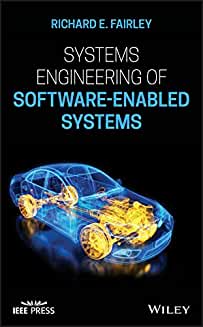
by
Richard E. Fairley
From the Amazon.com Website:
Systems Engineering of Software-Enabled Systems offers an authoritative review of the most current methods and techniques that can improve the links between systems engineering and software engineering. The author—a noted expert on the topic—offers an introduction to systems engineering and software engineering and presents the issues caused by the differences between the two during development process. The book reviews the traditional approaches used by systems engineers and software engineers and explores how they differ.
The book presents an approach to developing software-enabled systems that integrates the incremental approach used by systems engineers and the iterative approach used by software engineers. This unique approach is based on developing system capabilities that will provide the features, behaviors, and quality attributes needed by stakeholders, based on model-based system architecture. In addition, the author covers the management activities that a systems engineer or software engineer must engage in to manage and lead the technical work to be done. This important book:
- Offers an approach to improving the process of working with systems engineers and software engineers.
- Contains information on the planning and estimating, measuring and controlling, managing risk, and organizing and leading systems engineering teams.
- Includes a discussion of the key points of each chapter and exercises for review.
- Suggests numerous references that provide additional readings for development of software-enabled physical systems.
- Provides two case studies as running examples throughout the text.
Written for advanced undergraduates, graduate students, and practitioners, Systems Engineering of Software-Enabled Systems offers a comprehensive resource to the traditional and current techniques that can improve the links between systems engineering and software engineering.
Formats: eTextbook, Hardcover
Publisher: Wiley-IEEE Press; 1 edition (June 17, 2019)
ASIN: B07T94BGPW
7.3 Practical Creativity and Innovation in Systems Engineering
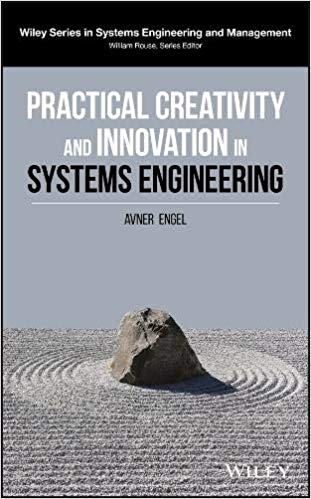
by
Avner Engel
Practical Creativity and Innovation in Systems Engineering exposes engineers to a broad set of creative methods they can adopt in their daily practices. In addition, this book guides engineers to become entrepreneurs within traditional engineering companies, promoting creative and innovative culture around them.
The author describes basic systems engineering concepts and includes an abbreviated summary of Standard 15288 systems’ life cycle processes. He then provides an extensive collection of practical creative methods which are linked to the various systems’ life cycle processes. Next, the author discusses obstacles to innovation and, in particular, how engineers can push creative ideas through layers of reactionary bureaucracy within non-innovative organizations. Finally, the author provides a comprehensive description of an exemplary creative and innovative case study recently completed.
The book is filled with illustrative examples and offers effective guidelines that can enhance individual engineers’ creative prowess as well as be used to create an organizational culture where creativity and innovation flourishes. This important book:
- Offers typical systems engineering processes that can be accomplished in creative ways throughout the development and post-development portions of a system’s lifetime.
- Includes a large collection of practical creative methods applicable to engineering and other technological domains
- Includes innovation advice needed to transform creative ideas into new products, services, businesses and marketing processes
- Contains references and notes for further reading in every section
Written for systems engineering practitioners, graduate school students, and faculty members of systems, electrical, aerospace, mechanical and industrial engineering schools, Practical Creativity and Innovation in Systems Engineering offers a useful guide for creating a culture that promotes innovation.
Formats: eTextbook, Hardcover
Publisher: Wiley; 1 edition (October 16, 2018)
ISBN-10: 1119383234
ISBN-13: 978-1119383239
7.4 Systems Analysis and Design
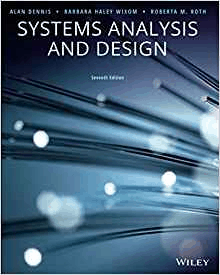
by
Alan Dennis, Barabara Heley Wixom and Roberta M. Roth
From the Amazon Website:
With the overarching goal of preparing the analysts of tomorrow, Systems Analysis and Design offers students a rigorous hands-on introduction to the field with a project-based approach that mirrors the real-world workflow. Core concepts are presented through running cases and examples, bolstered by in-depth explanations and special features that highlight critical points while emphasizing the process of doing alongside learning. As students apply their own work to real-world cases, they develop the essential skills and knowledge base a professional analyst needs while developing an instinct for approach, tools, and methods. Accessible, engaging, and geared toward active learning, this book conveys both essential knowledge and the experience of developing and analyzing systems; with this strong foundation in SAD concepts and applications, students are equipped with a robust and relevant skill set that maps directly to real-world systems analysis projects.
Formats: eTextbook, Paperback
Publisher: Wiley (December 10, 2018)
ISBN-10: 1119496500
ISBN-13: 978-1119496502
7.5 Unlearn: Let Go of Past Success to Achieve Extraordinary Results
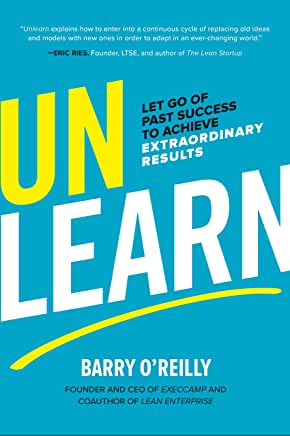
by
Barry O’Reilly
From the Amazon Website:
The transformative system that shows leaders how to rethink their strategies, retool their capabilities, and revitalize their businesses for stronger, longer-lasting success.
There’s a learning curve to running any successful business. But once you begin to rely on past achievements or get stuck in outdated thinking and practices that no longer work, you need to take a step back―and unlearn. This innovative and actionable framework from executive coach Barry O’Reilly shows you how to break the cycle of behaviors that were effective in the past but are no longer relevant in the current business climate, and now limit or may even stand in the way of your success.
With this simple but powerful three-step system, you’ll discover how to:
- Unlearn the behaviors and mindsets that prevent you and your businesses from moving forward.
- Relearn new skills, strategies, and innovations that are transforming the world every day.
- Break through old habits and thinking by opening up to new ideas and perspectives to achieve extraordinary results.
Packed with relatable anecdotes and real-world examples, this unique resource walks you through every step of the unlearning process. You’ll discover new ways of thinking and leading in every industry. You’ll identify what you need to unlearn, what to stop, what to keep, and what to change. By intentionally and routinely applying the system of unlearning, you’ll be able to adapt your mindset, adopt new behaviors, acquire new skills, and explore new options that will totally transform your performance and the business you lead. This book will help you let go of the past, and encourage your teams and organization to do the same. When you think big but start small, choose courage over comfort, and become curious to tackle uncertainty, you can achieve new levels of success you never dreamed possible.
Good leaders know they need to continuously learn but great leaders know when to unlearn the past to succeed in the future. This book shows you the way.
Formats: Kindle, Audiobook, Hardcover
Publisher: McGraw-Hill Education; 1 edition (November 27, 2018)
ISBN-10: 1260143015
ISBN-13: 978-1260143010
7.6 Preparing for the Fourth Industrial Revolution: A Guide to Tomorrow’s Technologies and Business Strategies
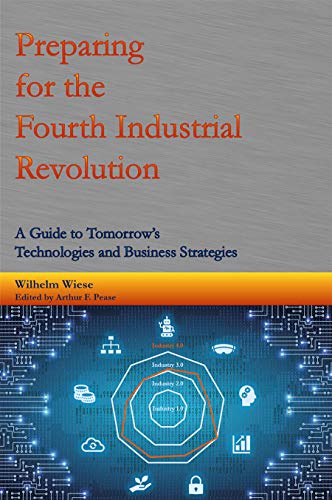
by
Wilhelm Wiese
From the Amazon.com Website:
You probably grew up during the Third Industrial Revolution and are fascinated by the new technologies that are taking industry to the next level. This book was written to help you prepare for the Fourth Industrial Revolution. Designed to be a guide to tomorrow’s technologies and business strategies, this book demystifies key buzzwords and explains topics such as artificial intelligence with examples drawn from an industrial context. It analyzes how new technologies will disrupt traditional concepts of automation and plant operation, identifies trends and visions of the future, and proposes methodologies designed to prepare to lead change rather than being disrupted by it. The book closes with a framework designed to derive a strategy that will help you steer your organization into the future – and be ready to leverage the opportunities of the Fourth Industrial Revolution.
Formats: Paperback
Publisher: Independently published (August 22, 2019)
ISBN-10: 1687146527
ISBN-13: 978-1687146526
8. EDUCATION AND ACADEMIA
8.1 The State of Graduate Systems Engineering Education in the U.S.
A Presentation by
Dr. John MacCarthy
Director of the University of Maryland’s Systems Engineering Education Program
Dr. MacCarthy provided a presentation for the Chesapeake Chapter of INCOSE on October 16, 2019 in which he described many aspects of graduate systems engineering education in the United States, including:
- INCOSE Education Initiatives
- Current Salaries and Numbers of New Jobs by Category of Engineer
- Graduate Programs as a System
- Considerations in the Development of a Systems Engineering Program
- Graduate SE Programs in the US
- INCOSE’s Graduate Reference Curriculum For Systems Engineering (GRCSE)
- The CorBoK (the body of SE knowledge that every graduate student is expected to master)
- CORBOK SE & SE Management Topics
- Typical Systems Engineering Curricula
- Admission Criteria
- Program Outcome Objectives
- The Structure and Content of Some Typical Systems Engineering Programs
View the presentation slides here.
8.2 Institute for Systems Research: Master of Science in Systems Engineering Degree at the University of Maryland (USA)
The Institute for Systems Research is an internationally recognized leader in systems research. It emphasizes advanced strategies for high-level synthesis and analysis of complex, multidisciplinary engineering systems, using model-based systems engineering techniques.
The Master of Science in Systems Engineering (MSSE) program has been created with substantial industry input. It covers systems definition, requirements, and specifications, as well as systems design, implementation, and operation. Students specialize in one or more of the following: robotics, cybersecurity, computer and software, control, manufacturing, transportation or process systems, communications and networking, signal processing, or operations research. Students also may specialize in any other area upon which they and their advisor mutually agree.
The program draws on the engineering, computer science, and management experience of the University of Maryland faculty, and makes optimum use of the university’s advanced facilities, including commercial and open-source software tools for model-based systems engineering (MBSE). In addition, the University of Maryland’s proximity to Washington, D.C. offers advantages and convenience for those seeking employment in, or already employed by, the federal government and the many private industries supporting it. The State of Maryland also has companies that serve the commercial and consumer markets (e.g. bioscience, health care, information technology).
Find out more here or contact
John MacCarthy
Director, Systems Engineering Education Program
The Institute for Systems Research
2175 A.V. Williams Building
Email: jmaccart@umd.edu
Phone: 301.405.4419
9. Some Systems Engineering-Relevant Websites
Center for Hardware and Embedded Systems Security and Trust
The link below navigates to the website of the Center for Hardware and Embedded Systems Security and Trust (CHEST). This joint center focused on the needs of industry in the security of hardware of cyberphysical systems and the Internet-of-Things and the circuits and embedded systems that underlie them. CHEST areas of interest include identification, detection, monitoring, mitigation, and elimination of vulnerabilities that affect hardware and embedded systems. More specifically, CHEST covers all levels of hardware and embedded systems design: system, architectural, board, microprocessor, embedded system, application specific integrated circuit (ASIC), field programmable gate array (FPGA), and other circuits.
Principia Cybernetica Project (PCP)
The Principia Cybernetica Project (PCP) aims to develop a complete philosophy or “world-view“, based on the principles of evolutionary cybernetics, and supported by collaborative computer technologies. To get started, there is an introduction with background and motivation, and an overview, summarizing the project as a whole. The site contains a structured catalog of information related to principles of systems.
http://pespmc1.vub.ac.be/DEFAULT.html
Free Online Artificial Intelligence (AI) Courses
This page contains links to six of the best courses on AI to help gain a basic grounding in the principles and practices around AI, automation and cognitive systems. AI is something which is likely to become increasingly valuable, regardless of your field of business, expertise or profession.
10. Standards and Guides
10.1 Demystifying DoDAF 2.02 – What Is An Architecture?
This 2-hour seminar introduces DoDAF 2.02 aiming at removing some of the confusion associated with terminology and DoDAF component relationships. Dr. Steven Dam and James Willis teach DoDAF during this seminar. The presenters recommend viewing an architecture as a database.
Watch the video here.
11. Some definitions to close on
11.1 Cybernetics
Cybernetics is a transdisciplinary approach for exploring regulatory systems – their structures, constraints, and possibilities. Norbert Wiener defined cybernetics in 1948 as “the scientific study of control and communication in the animal and the machine.” In other words, it is the scientific study of how humans, animals and machines control and communicate with each other.
Source: Wikipedia
11.2 Artificial Intelligence
In computer science, artificial intelligence (AI), sometimes called machine intelligence, is intelligence demonstrated by machines, in contrast to the natural intelligence displayed by humans. Leading AI textbooks define the field as the study of “intelligent agents”: any device that perceives its environment and takes actions that maximize its chance of successfully achieving its goals. Colloquially, the term “artificial intelligence” is often used to describe machines (or computers) that mimic “cognitive” functions that humans associate with the human mind, such as “learning” and “problem solving”.
Source: Wikipedia
11.3 System Architecture
The architecture of a system is its fundamental structure which may include principles applying to the structure as well as specific structures.
Source: INCOSE UK Z8 Guide
12. Conferences and Meetings
For more information on systems engineering related conferences and meetings, please go to our website.
The featured event for this edition is:
INCOSE International Workshop 2020
25 – 28 January, 2020 – Torrance, California
INCOSE’s International Workshop is the event of the year for systems engineers to contribute to the state of the art. Unlike INCOSE’s annual International Symposium and other conferences, there are no paper, panel or tutorial presentations. Instead, attendees spend 4 days working alongside fellow systems engineers who are there to make a difference. Systems Engineers at all levels and from all backgrounds are encouraged to engage in working sessions, and contribute their knowledge and experience to take the discipline forward.
IW2020 facilitates working meetings for groups engaged in INCOSE’s major projects and in international standards development, workshops to explore the Systems Engineering challenges in new sectors, opportunities for chapter leaders to meet and share best practice, support sessions to help you get the most out of INCOSE’s shared working environment and a broad range of other technical meetings. Planned sessions will be published on the website as these become available.
There are two kinds of working group sessions at the IW:
- Working sessions, where the focus is on improving and completing working group products. Working sessions are ideal for contributing with and learning from the real experts in the field. Attendees planning to attend Working sessions are encouraged to contact the relevant session leaders before the event to facilitate planning
- Outreach sessions, where the focus is on disseminating the current state of the art to Workshop attendees with no of little previous exposure to the working groups. Attending an Outreach session is also the ideal opportunity to influence the future direction of a working group and perhaps the entry point for deeper working group involvement.
Register for the conference here.
IW2020 is open to INCOSE members, and non-members are encouraged to join INCOSE prior to the IW. For more information about membership, please visit www.incose.org/about-incose/incose-membership/membership-types or email info@incose.org.
13. PPI and cti News
13.1 INCOSE and PPI to Demo First Functional Prototype of the SETDB at the INCOSE IW 2020
PPI is excited to announce the first functional prototype demonstration of the Systems Engineering Tools Database (SETDB) at the INCOSE International Workshop in Torrance, California from 25 – 28 January 2020. The functional prototype will possess limited functionality that demonstrates what the SETDB may look like from the user’s perspective. We welcome all participants at the IW to come to the demonstration booth and have a go at navigating the site and of course provide your valued feedback. There will be adequate notice at the registration desk and in the hotel area pointing to the prototype desk. We look forward to collecting your reviews in order to make for a more robust and valuable SETDB in time for the IS 2020!
PPI has been working on this project with INCOSE since 2018. Read more about the project here or email René King if you have specific questions related to the project.
13.2 PPI Celebrates a New Record for Number of Courses Conducted in a Week
PPI recently celebrated a record-breaking week in terms of the number of courses conducted. The previous PPI/CTI record was five courses in a week, but the week of 9 – 13 December 2019 shattered that record with six courses taking place, three of them being our flagship Systems Engineering Five Day (SE5D) course. The courses took place across four continents and in five cities. It is very encouraging to see so many individuals and organizations committed to success of their projects through participation in our in-depth SE training. Are you interested in attending our SE5D course? Find out where the next course is being held near you, or enquire here about on-site training for your organization.
14. PPI and CTI Events
On-site systems engineering training is delivered worldwide throughout the year. Below is an overview of public courses. For a full public training course schedule, please visit https://www.ppi-int.com/course-schedule/
Systems Engineering 5-Day Courses
Upcoming locations include:
- Amsterdam, the Netherlands (P006-802)
24 Feb – 28 Feb 2020
Requirements Analysis and Specification Writing 5-Day Courses
Upcoming locations include:
- Madrid, Spain (P007-500)
09 Mar – 13 Mar 2020
Systems Engineering Management 5-Day Courses
Upcoming locations include:
- Detroit, MI, USA (P1135-180)
10 Feb – 14 Feb 2020
Requirements, OCD and CONOPS in Military Capability Development 5-Day Courses
Upcoming locations include:
- Melbourne, Australia (P958-62)
16 Mar – 20 Mar 2020
Engineering Successful Infrastructure Systems (ESIS5D)
Upcoming locations include:
- Detroit, MI USA (P2005-5)
15 Jun – 19 Jun 2020
Architectural Design 5-Day Course
Upcoming locations include:
- Adelaide, South Australia (P1768-27)
04 May – 08 May 2020
CSEP Preparation 5-Day Courses (Presented by Certification Training International, a PPI company)
Upcoming locations include:
- Bristol, U.K. (C002-96)
27 Apr – 01 May 2020
Medical Device Risk Management 3-Day Course
Upcoming locations include:
- Berlin, Germany (P1848-8)
17 Mar – 19 Mar 2020
Other training courses available on-site only include:
- Project Risk and Opportunity Management 3-Day
- Managing Technical Projects 2-Day
- Integrated Product Teams 2-Day
- Software Engineering 5-Day.
15. Upcoming PPI Participation in Professional Conferences
PPI will be participating in the following upcoming events. We support the events that we are sponsoring, and look forward to meeting old friends and making new friends at the events at which we will be exhibiting.
Institute of Industrial and Systems Engineering Annual Conference 2019
(Exhibiting)
Date: 30 May – 02 June, 2020
Location: New Orleans (LA), United States
The INCOSE International Symposium 2020
(Exhibiting)
Date: 18 – 23 July, 2020
Location: Cape Town, South Africa
Kind regards from the PPI SyEN team:
Robert Halligan, Editor-in-Chief, email: rhalligan@ppi-int.com
Ralph Young, Editor, email: ryoung@ppi-int.com
René King, Managing Editor, email: rking@ppi-int.com
Project Performance International
2 Parkgate Drive, Ringwood, Vic 3134 Australia
Tel: +61 3 9876 7345
Fax: +61 3 9876 2664
Tel Brasil: +55 12 9 9780 3490
Tel UK: +44 20 3608 6754
Tel USA: +1 888 772 5174
Tel China: +86 188 5117 2867
Web: www.ppi-int.com
Email: contact@ppi-int.com
Copyright 2012-2019 Project Performance (Australia) Pty Ltd, trading as
Project Performance International
Tell us what you think of PPI SyEN. Email us at syen@ppi-int.info.



